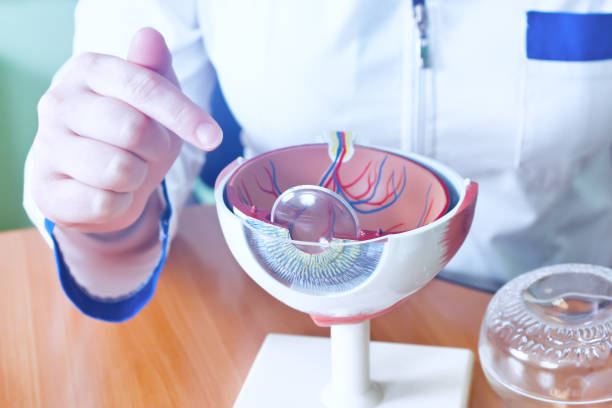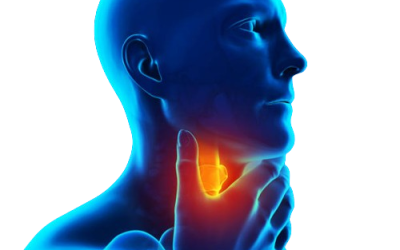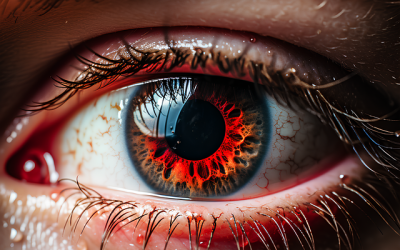Meibomian Gland Disease: Causes, Symptoms, Diagnosis, and Treatment
Introduction:
Meibomian Gland Disease (MGD) is a common condition affecting the meibomian glands located in the eyelids. These glands secrete an oily substance known as meibum, It protects the watery layer of tears that covers your eyes and prevents them from drying out. Meibomian Gland Dysfunction is a chronic condition that occurs when the glands in the eyelids do not produce enough oil, or the oil that is produced is of small quality. When these glands are dysfunctional, it can result in various eye-related problems and discomfort.
The surface of your eyes is covered by a tin layer of tear called Tear Film, Your tear film has several important functions; It washes, protects, nourishes, and lubricates the eyes. Blinking smooths the tear film evenly across the surface of the eye and stimulates the production of tears.
Tears are produced by several systems and if any of these systems break down, it can result in a reduced quality and quantity of tears. The lipid (Oily) layer in the tear film is very important. It is produced by the Meibomian gland in the eyelid. If the lipid layer is not present or is of poor quality in the Tear film, eye problems can result.
Causes and Risk Factors of Meibomian Gland Dysfunction:
- Obstruction of Meibomian Glands:
- Hyperkeratinization and blockage
- Increased viscosity of meibum
- Pressure on glandular structures
- Inflammation and Blepharitis:
- Role of bacteria and Demodex mites
- Relationship between blepharitis and MGD
- Chronic inflammation impacting gland function
- Other Contributing Factors:
- Hormonal changes
- Age-related glandular changes
- Environmental factors (e.g., dry air, pollution)
- Contact lens wear and ocular surface diseases
Common Symptoms of Meibomian Gland Disease
- Ocular Surface Symptoms:
- Dryness and discomfort
- Burning or gritty sensation
- Redness and irritation
- Episodic blurred vision
- Light sensitivity
- Fluctuations in vision
- Contact lens discomfort.
- Eyelid and Lid Margin Symptoms:
- Sore, red, eyelid inflammation and swelling
- Crusting and debris along the lash line
- Meibomian gland orifice plugging
- Thickening and irregularity of the lid margins
- Eyelids are difficult to open in the morning
Diagnosis and Evaluation of Meibomian Gland Disease:
- Clinical Examination:
- Meibography and glandular function assessment
- Evaluation of eyelid and lid margin appearance
- Tear film evaluation (e.g., tear breakup time, Schirmer’s test)
- Assessment of ocular surface integrity
- Grading Scales and Diagnostic Criteria:
- Standardized grading systems for MGD severity
- Criteria for diagnosing meibomian gland dysfunction
Management and Treatment Options:
- Lid Hygiene and Warm Compresses:
- Gentle lid scrubs and lid margin massage
- Application of warm compresses for gland expression
- Mechanisms of action and recommendations for use
- Doctor-Administered Treatments:
- Manual meibomian gland expression
- Thermal pulsation therapy
- Intense pulsed light therapy
- Topical and systemic therapies (e.g., antibiotics, corticosteroids)
- Lifestyle Modifications and Eye Care:
- Environmental modifications (e.g., humidification)
- Dietary considerations and omega-3 supplementation
- Importance of regular eye exams and follow-up visits
Conclusion:
Meibomian Gland Disease is a widespread condition that can significantly impact a person’s ocular comfort and visual function. Proper understanding of the causes, symptoms, and available management strategies is crucial for accurate diagnosis and optimal treatment. Ongoing research and advancements in the field will continue to enhance our understanding of MGD, paving the way for enhanced therapeutic options that alleviate patient suffering and improve ocular health outcomes.




